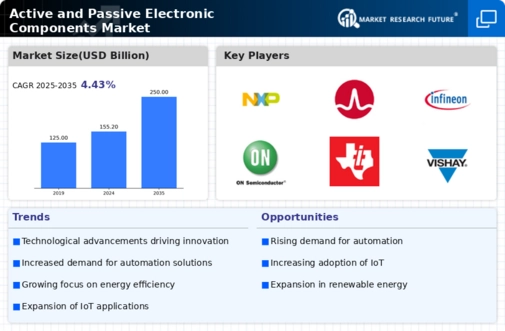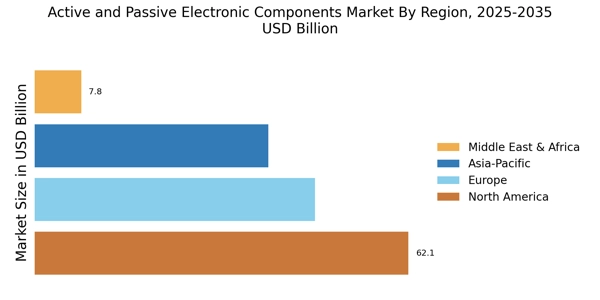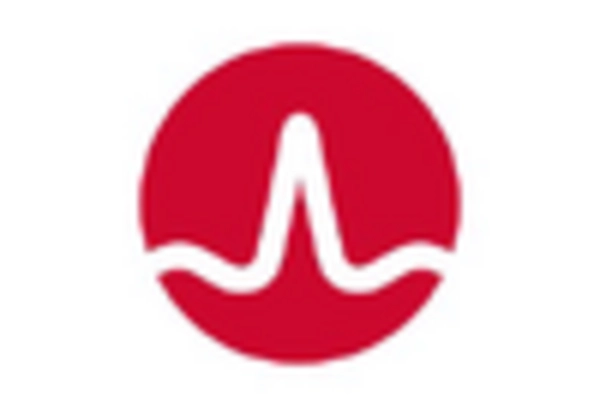Emergence of 5G Technology
The rollout of 5G technology is poised to revolutionize communication systems, thereby impacting the Active and Passive Electronic Components Market. With the promise of faster data speeds and lower latency, 5G networks require advanced electronic components to function effectively. The telecommunications sector is expected to invest heavily in infrastructure to support this new technology, with projections indicating a market size of over 700 billion dollars by 2025. This investment will likely lead to increased demand for both active and passive components, as they are critical for the development of 5G-enabled devices and networks.
Focus on Renewable Energy Solutions
The Active and Passive Electronic Components Industry. As countries strive to reduce carbon emissions, there is a growing emphasis on solar, wind, and other renewable energy technologies. This transition necessitates the use of various electronic components, such as inverters, capacitors, and semiconductors, which are essential for energy conversion and management. The renewable energy market is projected to grow significantly, with estimates suggesting it could exceed 2 trillion dollars by 2025. This growth presents substantial opportunities for manufacturers of electronic components, as they play a crucial role in the efficiency and effectiveness of renewable energy systems.
Advancements in Automotive Electronics
The automotive industry is undergoing a transformation, with a significant shift towards electric and autonomous vehicles. This evolution is driving the Active and Passive Electronic Components Market, as these vehicles require advanced electronic systems for operation. The market for automotive electronics is anticipated to grow at a compound annual growth rate of approximately 8% through 2025. This growth is largely attributed to the increasing integration of electronic components in vehicles, including sensors, control units, and communication systems. As automotive manufacturers strive to enhance safety, efficiency, and connectivity, the demand for high-quality electronic components is likely to escalate.
Growth of the Internet of Things (IoT)
The proliferation of the Internet of Things (IoT) is significantly influencing the Active and Passive Electronic Components Market. As more devices become interconnected, the need for reliable electronic components has surged. The IoT market is projected to expand rapidly, with estimates suggesting it could reach a valuation of over 1.5 trillion dollars by 2025. This growth necessitates a diverse range of active and passive components to support various applications, from smart home devices to industrial automation. The increasing reliance on IoT technology is likely to drive innovation and demand within the electronic components sector, fostering a competitive landscape.
Rising Demand for Consumer Electronics
The increasing demand for consumer electronics is a primary driver of the Active and Passive Electronic Components Market. As technology continues to advance, consumers are seeking more sophisticated devices, such as smartphones, tablets, and smart home appliances. This trend is reflected in the projected growth of the consumer electronics sector, which is expected to reach a valuation of over 1 trillion dollars by 2025. Consequently, manufacturers are compelled to enhance their product offerings, leading to a surge in the demand for both active and passive electronic components. These components are essential for the functionality and performance of modern devices, thereby propelling the market forward.
















Leave a Comment